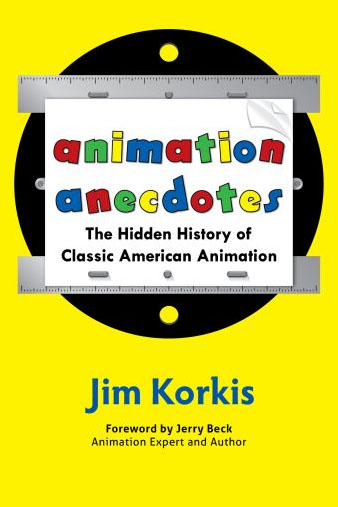
EDITORS NOTE: Jim Korkis has compiled the best of his Animation Anecdotes into one convenient book that compacts years – decades – of cartoon history in a concise organized form that doesn’t require digging through internet archives. It’s available now through Theme Park Press and on Amazon (via Kindle). As Jim and I go way way back, I thought I’d ask him a few questions about his years of collecting facts and figures about classic cartoons. – Jerry Beck
Jerry: Jim, I am very excited that you finally came out with a book collecting some of your Animation Anecdotes. I consider your column the backbone of this site – the one constant we can depend on each week. Cartoon Research readers love them and I do, too.
Jim: Thank YOU, Jerry, for the very kind foreword that you wrote for the book. It’s hard to believe we have both been at this since being columnists for Dave Mruz’s animation fanzine, Mindrot, back in 1977. You wrote your Cartoon Review column and I wrote one with anecdotes called Harlequin.Jerry: I remember it well. It seems like just yesterday. In fact, it was yesterday. We are still doing these columns today under new names! When did you start labeling your columns “Animation Anecdotes”?
Jim: I didn’t shift the title to Animation Anecdotes until 1986 when I started writing the column for Animation Magazine. My friend and former writing and business partner John Cawley came up with the new title. I wrote that column for roughly a decade.
Jerry: I loved the stuff the two of you wrote together like those animation books, The Encyclopedia of Cartoon Superstars and How to Create Animation. Those are great resources.
Jim: Those were both done for Pioneer Press in 1990 and have long been out-of-print. The publisher wanted me to do an Animation Anecdotes book but it turned out that he lacked integrity. John and I did not see a dime after the books were released and the publisher skipped town. Apparently, he treated his other authors the same way. I’ve learned a lot about publishers over the decades as I am sure you have.
Jerry: I have. Let’s just say, you shouldn’t plan on striking it rich by writing books. Writing a blog is more satisfying. Readers here love your weekly column. Is your new book just a compilation of those anecdotes?
Jim: Actually, I wrote Animation Anecdotes-like columns for a variety of publications like Animato!, The Comics Reader, the ASIFA-Hollywood newsletter and so many others, so the book is filled with some of the best from those long ago issues, some that have appeared here at your site for over a year (with all the corrections and additions that readers have been kind enough to share) as well as some brand new ones.
Jerry: You keep telling me that you love the additions and corrections. That’s what I love about the Cartoon Research website, we can get additional information and updates faster than ever before.
Jim: Absolutely. I have no vanity when it comes to information. It is important to get the accurate information out there even at the expense of stroking my ego. Nobody knows everything and I love it when people correct or add to what I have written or even share their own anecdotes. Cartoon Research is just like those wonderful old animation fanzines only so much better.
Jerry: I noticed you organized the book to try to make it easier to find a particular anecdote.Jim: I love the fact that the column is so eclectic that you might have a story from the Golden Age of Animation, followed by a quote from Ralph Bakshi, followed by a fun fact from an old newspaper and so on. However, that format just didn’t work for a book so I finally divided it up into chapters with one for Disney, Lantz, Bakshi, Hanna-Barbera, etc. Then within each chapter, I had subdivisions so that the Fleischer chapter has a subsection just on Popeye and another on Betty Boop and finally, I have a fairly lengthy multi-page double column index in tiny type in the back. Hopefully, people will be able to locate their favorite stories quickly.
Jerry: I suppose your favorite chapter is the one on Disney.
Jim: That’s a good guess, but actually my favorite chapter is the one on animated films never made. I have always had a great fascination about a studio announcing an animated project, investing time and money on character designs, stories and more and then just abandoning it completely. Whether it was the Dracula animated feature with Frank Frazetta concept art or Disney’s feature on Hiawatha that would include artwork from Native American artists or Walter Lantz wanting to make the animated feature Ali Baba and the Forty Thieves for Universal using caricatures of Abbott and Costello (!!), all of those projects fascinated me and are included in the book.
Jerry: You’ve compiled so much material – will we eventually see a Volume 2?
Jim: Jerry, I have learned a lot from you over the years. One of the things you always say when a DVD/Blu-Ray set comes out is that if we want to see more, we have to “vote with your wallets”. We can’t just wait to see if there might be a remaindered set or a friend gets it for us as a gift. We have to buy it now and encourage our friends to buy it now. Sales on this book will determine if there is a sequel. I certainly have enough material for at least two more sequels. That’s why I am grateful for you giving me this publicity. I hope all those who are reading will do the same at their blogs and twitter accounts and more to just let people know the book exists. Animation fandom is much different today than back in the good ol’ days.
Jerry: So true. I am learning more about that every day with these two sites. The internet, and how we consume information, seems to constantly change. You also have another book that came out at the same time, right?
Jim: Thanks for mentioning that. Yes, The Vault of Walt Volume 3 was released the same week. Once again, it is divided into four sections (Walt, the Disney films, the Disney theme parks, miscellaneous) with two dozen stories. Animation fans will be interested in the chapters on making Lady and the Tramp in CinemaScope, the story behind the computer short Off His Rockers, the Firehouse Five Plus Two, an expanded look at the life of Cliff Edwards, and how Basil of Baker Street saved animation at the Disney Studio.
Jerry: Thank you, Jim, for taking time to answer these questions.
Jim: Thank you, Jerry, for letting people know these books exist. I am currently working on a book to be released in Spring 2015 that is entirely about a Disney animated feature that was abandoned. Until then, I have to sit down and write some more Animation Anecdotes for all the Fridays coming up. I think I make it look seamless but it gets harder and harder each time. I am glad that people enjoy them, and will enjoy the book as well.
You can purchase Animation Anecdotes the Book via Theme Park Press and on Amazon (for Kindle). Do it.


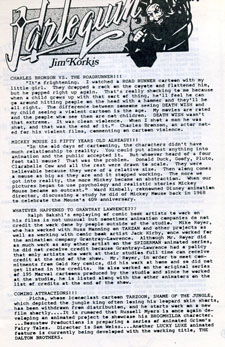
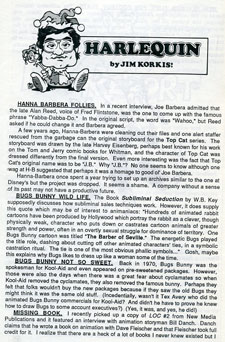
 Jerry Beck is a writer, animation producer, college professor and author of more than 15 books on animation history. He is a former studio exec with Nickelodeon Movies and Disney, and has written for The Hollywood Reporter and Variety. He has curated cartoons for DVD and Blu-ray compilations and has lent his expertise to dozens of bonus documentaries and audio commentaries on such. Beck is currently on the faculty of CalArts in Valencia, UCLA in Westwood and Woodbury University in Burbank – teaching animation history. More about Jerry Beck [
Jerry Beck is a writer, animation producer, college professor and author of more than 15 books on animation history. He is a former studio exec with Nickelodeon Movies and Disney, and has written for The Hollywood Reporter and Variety. He has curated cartoons for DVD and Blu-ray compilations and has lent his expertise to dozens of bonus documentaries and audio commentaries on such. Beck is currently on the faculty of CalArts in Valencia, UCLA in Westwood and Woodbury University in Burbank – teaching animation history. More about Jerry Beck [



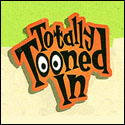



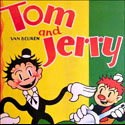
By any chance, did Korkis do an article for the kids magazine, “Disney Adventures” about famous cartoon characters for an issue about animation?
I had this issue (which is unfortuantly lost) and I recall it mentioning the character(s) famous phrase, what year they debut and a fun fact about the character(s). It was the first time I heard about the Bullwinkle puppet’s infamous moment where he told kids to pull the knobs of their TV sets. The more I think about this article, the more I think that Korkis wrote it. Did you, Jim?
Yes, that was me. Disney Adventures March 1998 (Volume 8 No. 5), a four page article entitled The Toon Hall of Fame and yes it did feature that Bullwinkle puppet story. I covered Betty Boop, Bugs Bunny, Cruella De Vil, Daffy Duck, Donald Duck, Fred Flintstone, Home Simpson, Mickey Mouse, Popeye, and Rocky and Bullwinkle. Editor Heidi MacDonald gave me those characters. They were not my choice. She wanted fun facts that were not common knowledge.
I have three extra copies so if you want a copy to bring back memories, send me your snail mail address and I will drop one in the mail. If you want me to autograph it on the article page, let me know.
Nice logo on that second one!
Nice logo? Are you insane? It was an outstanding logo! It was done by one of my favorite cartoonists and caricaturists. I met him briefly at a Minneapolis Comic Con where he was enthralling guests by drawing their caricatures. Really nice and talented guy. I told him that I loved the work he was doing in The Comic Reader fanzine.
Then two to three weeks later, I got this logo in my mail box. I was speechless. It was clever and, unfortunately, it looked just like me. In those days, I still harbored hopes I would look like Cary Grant rather than grow up looking like Homer Simpson. This logo is a reminder I should be satisfied with what I really look like in real life. I keep getting older, fatter and losing hair but this logo remains the same.
To this day, I still love that logo and love all the artwork I saw done by that artist. No, it wasn’t cartoonist Chuck Fiala who was also there at the Con, it was the insanely talented Jim Engel who made it seem as if the artwork just flowed from his hand without effort. Whatever happened to that guy and I wonder if he would be interested in drawing a cover for one of my upcoming books? Nice logo, indeed!
“Mindrot.” Now _that_ sounds great!
Mindrot was the brain child of publisher David Mruz. One of his teachers told him that if he kept watching cartoons and reading comic books that it would rot his mind. After the disappearance of Michael Barrier’s FUNNYWORLD, MINDROT was the only source for animation information for the longest time for the rest of us out in the wilderness. Originally, the zine was going to include articles about comics as well but like Barrier’s magazine, it quickly became focused primarily on animation.
I just want to second everything that Jerry said about your contributions to this site, Jim. It really is its backbone, and as busy as my scheule is I always make the effort to seek out your articles each week, and I’m sure I’m not the only one here who does the same
Good luck with your book!
But John & you DID do an “Animation Anecdotes” book, though it wasn’t called that. I read what was called “Cartoon Confidential” at Hayward Public Library a few times while that book was in circulable condition, and in my over 10 Michigandrous years, I do believe I read a copy gotten thru an Interlibrary Loan Service.
So….yeah, a prior “AA” book was published, and I’ve read it.
I just know your new book will blow “CC” right outa the water.
Cartoon Confidential was actually a revised and expanded compilation of the animation columns that John and I were doing for the Fantagraphics AMAZING HEROES magazine which was primarily focused on comic books. They were short essays rather than anecdotes but I am happy that the book popped up in a library for you to read. John and I made a special effort to select out-of-the-ordinary illustrations for the book.
I remember browsing through Cartoon Confidential in a Suncoast Video store over 20 years ago. That’s where I first found out about (and saw a picture of) the Fantasia character “Sunflower”.